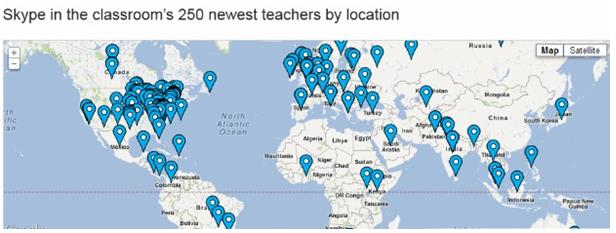
Chances are your memories from fourth grade do not include video chatting with students from Morocco to discuss culture and food trends. However, for some New Hampshire elementary students, and an increasing number of classrooms across the country, global video conferencing is becoming a common classroom occurrence.
Skype, an application that allows users to make voice and video calls over the internet, released its “Skype in the Classroom” program late last year. The free online program brings teachers together to set up global classroom chats. Focusing on culture, language and discovery, Skype in the Classroom is providing a global networking platform for classroom collaboration. Teachers set up online profiles listing their classroom interests, specialties, and locations to find partner classrooms across the globe.
For example, after being frustrated with a lack of counter viewpoints in Australian textbooks on WWI, a history teacher from Australia partnered with a class in Turkey to discuss different points of view on the conflict.
Skype is not the only brand providing the infrastructure for this type of education based exchange. A site called Glovico for instance, sets up a marketplace for online language tutors and video chat based lessons. A startup called Verbling takes a different approach and organizes free language exchanges, allowing users to speak in one language for a designated time and then switch to the other users language for the remainder of the session.
Skype in the Classroom also encourages national classroom conferencing, promoting partnerships with experts such as Olympians, scientists, and authors. This year a third grade classroom in Maine hosted former first lady Barbara Bush, via Skype, to discuss the importance of reading and grammar. Some teachers on the site even invite busy parents to call in from their offices, creating “virtual career days.”
According to Skype CEO Tony Bates, Skype in the Classroom reached 20,000 educators in December with the ultimate goal of connecting one million classrooms. Currently 170 different countries are represented in the global classroom program.
Video chatting is not the only way digital and social media are being used to connect with the youth education market.
Wikispaces, a website free for educators, allows teachers to build interactive sites where students can contribute content, and collaborate on discussion boards. Another media sharing site, Schooltube.com, provides a place for educators and students to share videos ranging from raps about math to detailed calculus lessons. Here at KSV, our team is partnering with VSAC to launch a Facebook App to assist students with planning for life after high school.
How else do you see brands using digital and social tools to connect with students in the education space?
